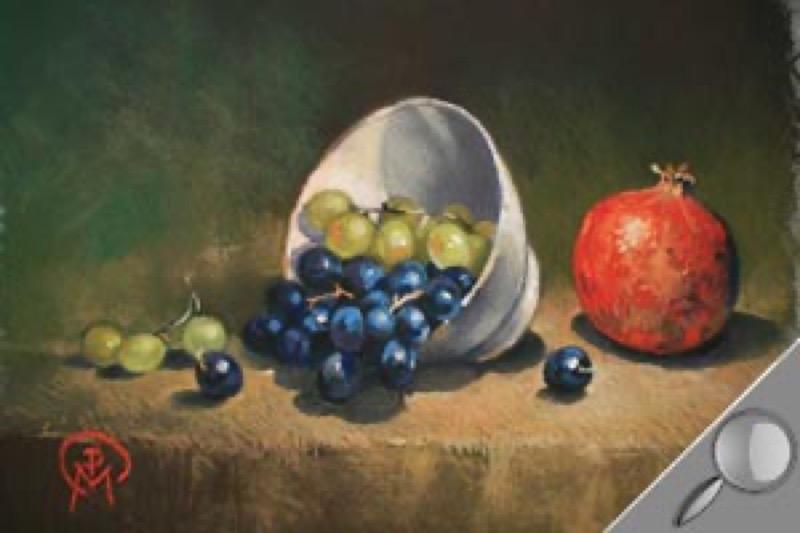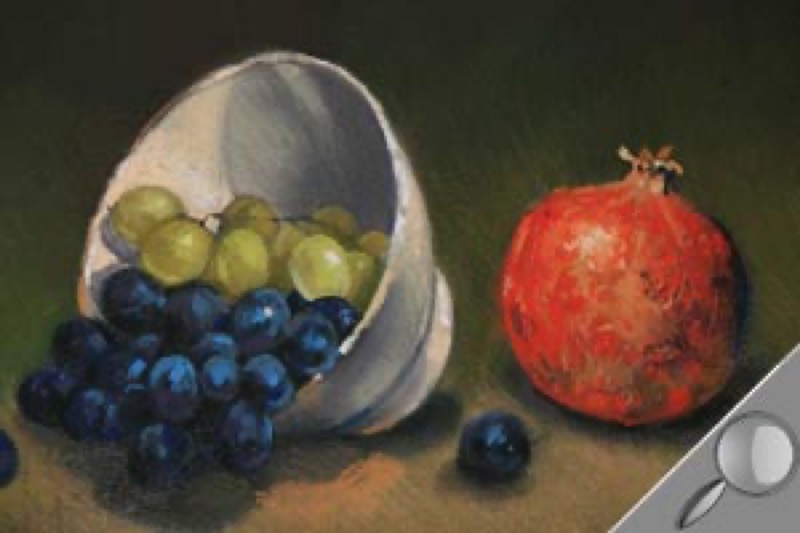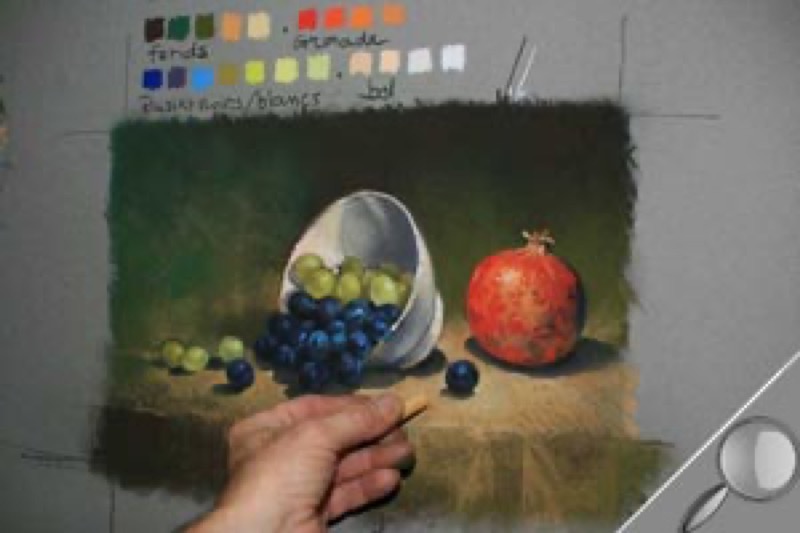
Execution Time: 4:15 hours
Drawing: ½ hour Adding values: ½ hour Choosing colors: ¼ hour Adding color: 3 hours
Level: advanced
Artist: Patrick Martin
Fans of dry pastels, this tutorial was created just for you! This 9-step still life will allow you to tackle all the issues involved with this technique: choosing and composing your subject, choosing and assembling the colors, applying the right pressure to the pastel stick. The challenge of this exercise: creating an intimate atmosphere! Some advice: place your work upright on an easel, and set up the lighting of your model meticulously, because how you express the light that will bring your subject to life.
Material
- Colors: Rembrandt dry pastels
Permanent red 372.5; dark permanent red 371.5; gold ocher 231.7 and 231.9; lemon yellow 205.12; dark yellow 202.9; light orange 236.9; yellow ocher 227.5; Prussian blue 508.5; violet blue 548.3; phtalo blue 570.5; dark yellow 202.3; light yellow 201.7; raw sienna 234.5; olive green 620.3; raw umber 408.3; burnt sienna 409.3
- Paper: Canson® Mi-Teintes 160 g/m2, felt gray
- Accessories: 1 Pierre Noire black pencil 2B/1, 1 white lead, 1 kneaded eraser, 1 fixative spray, 1 rag, 1 board and 4 drawing clips (for attaching the paper).









